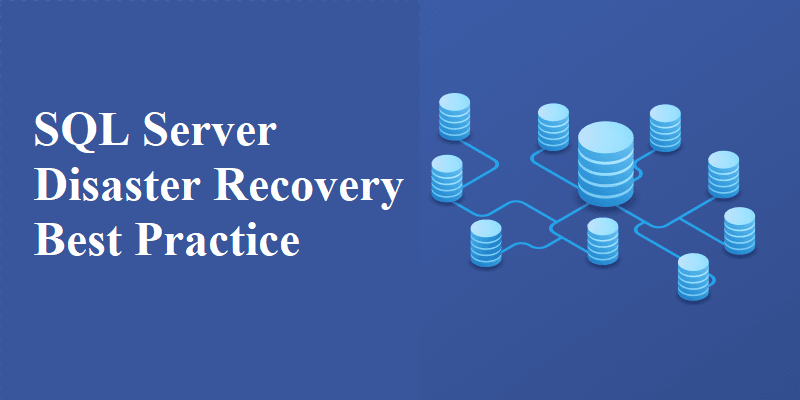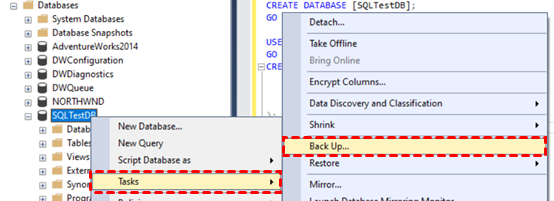In today's data-driven world, SQL Server databases are the lifeblood of countless businesses and organizations. Ensuring the continuity of these databases is paramount, and that's where disaster recovery comes into play.

SQL Server databases are the backbone of many organizations, housing invaluable information and applications, and any disruption to these databases can have serious consequences. Here's why disaster recovery in SQL Server is crucial:

SQL Server databases can be vulnerable to various types of disasters, both natural and human-induced. To ensure data continuity and recovery preparedness, it's essential to understand the types of disasters that can impact SQL Server databases and choose different SQL Server disaster recovery options:
SQL Server disaster recovery is a critical aspect of database management, ensuring data continuity and resilience in the face of various disasters. Here are the Microsoft SQL Server disaster recovery best practices:
◈ Take a backup of your database
1. Start SQL Server Management Studio (SSMS) and establish a connection to your SQL Server instance.
2. In the Object Explorer, expand the Databases node.
3. Right-click on your database, navigate to Tasks, and choose the Back up... option.

4. In the Destination section, verify the accuracy of the backup path. If you need to modify the path, click Remove to delete the current path and then click Add to input a new one. You can also use the three dots (...) to browse to a specific file location.
5. Confirm your selection by clicking OK to initiate the database backup process.
◈ Restore your database from backup
1. Open SQL Server Management Studio (SSMS) and establish a connection with your SQL Server instance.
2. In the Object Explorer, right-click on the Databases section, and from the context menu, choose the option to Restore Database....
3. Opt for the Device option and click the three dots (...) to search for your backup file.
4. Click on the Add button and navigate to the directory where your .bak file is situated. Choose the .bak file and then press OK.
5. Confirm your selection by clicking OK again to close the Select backup devices dialog box.
6. Finally, click OK once more to initiate the restoration process for your database backup.
◈ Take a backup of your database with command
You can run the following Transact-SQL command to back up your database. The path may be different on your computer:
USE [master]; GO BACKUP DATABASE [SQLTestDB] TO DISK = N'C:\Program Files\Microsoft SQL Server\MSSQL14.MSSQLSERVER\MSSQL\Backup\SQLTestDB.bak' WITH NOFORMAT, NOINIT, NAME = N'SQLTestDB-Full Database Backup', SKIP, NOREWIND, NOUNLOAD, STATS = 10; GO
◈ Restore your database from backup with command
You can run the following Transact-SQL script to restore your database. The path may be different on your computer:
USE [master]; GO RESTORE DATABASE [SQLTestDB] FROM DISK = N'C:\Program Files\Microsoft SQL Server\MSSQL14.MSSQLSERVER\MSSQL\Backup\SQLTestDB.bak' WITH FILE = 1, NOUNLOAD, STATS = 5; GO
AOMEI Cyber Backup is a versatile backup and recovery software that can be used for various backup and restore tasks, including SQL database backup and restore. You can click the following button to try the 30-day free trial for SQL Server disaster recovery setup:
AOMEI Cyber Backup supports Microsoft SQL 2005-2022, including SQL Express. Here's a step-by-step guide on how to use AOMEI Cyber Backup for database backup and restore:
◈ Back up your database with AOMEI Cyber Backup
1. Add device: Navigate to Source Device >> Add Microsoft SQL. If the database exists and the version is supported, it will appear automatically.
2. Choose Authentication: Click … >> Authentication to validate the database instance. You can choose Windows Authentication or SQL Authentication. Enter the credentials and click Verify.
3. Create backup task: Click Backup Task >> Create New Task, and select Microsoft SQL Backup as your backup type.
✍ Additional features of the trial version: • Backup Cleanup: Help you to delete older backup version automatically and therefore save storage space. • Email Notification: Enable you to receive email notifications when the task is abnormal or successful.
4. Start Backup: You can choose to Add the schedule and start backup now or Add the schedule only.
◈ Restore your database from backup
1. Click Backup Task on the left menu bar, locate the task you want to restore, and click ... >> Restore. Then specify the settings of your restore task.
2. Restore to new location: Create a new database in the same or another datastore/host directly from the backup, saves the trouble of re-configuring the database.
3. Start restore: After configuring all the settings, click Start Restore.
Disaster recovery is a vital component of SQL Server management. It safeguards your data, maintains business continuity, and ensures you comply with legal requirements.
By following SQL Server disaster recovery best practices, you can minimize downtime, reduce risks, and keep your data safe, even in the face of adversity. Prioritizing disaster recovery planning is not an option; it's a necessity in today's dynamic and data-dependent environment.